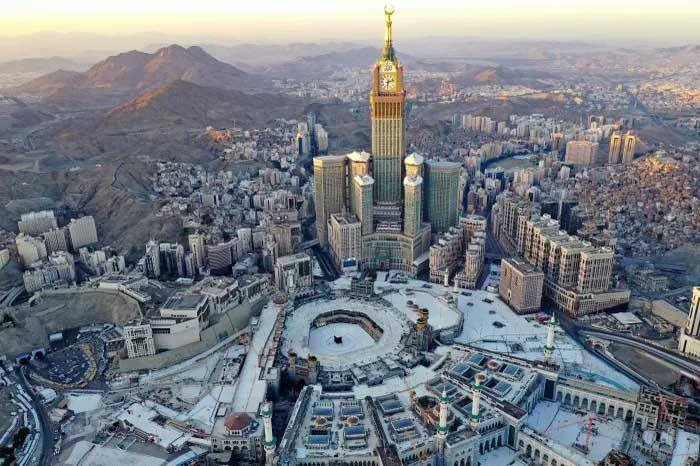Countries without rivers are often located in arid desert regions, where rainfall and water sources are scarce, or where the land area is too small to support a river.
Based on this criterion, some countries and territories can be named, including: Comoros, Djibouti, Libya, Bahrain, Kuwait, Maldives, Oman, Qatar, Saudi Arabia, United Arab Emirates, Yemen, Malta, Monaco, Vatican City…
Countries predominantly covered by desert typically experience a very dry climate, often lacking rivers or the ability to maintain rivers year-round.
In this list, Saudi Arabia is the largest country by area (2.1 million km2). This country is characterized by vast deserts, hot temperatures, and dry conditions. While rainfall occurs, it is quickly absorbed or evaporates due to the high temperatures.
Only a few oases appear amidst the desert sand dunes. Aside from these, there are no significant rivers or water sources present. This poses significant challenges for the people of Saudi Arabia in their daily lives. To cope with the lack of fresh water, they must rely on desalination plants or underground reservoirs, which are very costly.
Similarly, Libya is the second-largest country without major rivers on the list. Much of the country is covered by the Libyan Desert, one of the driest places on Earth. Rainfall is extremely rare here, and there are no rivers. However, groundwater is available, providing fresh water for 6.7 million residents.

Countries without rivers are predominantly desert. (Photo: CNN).
Kuwait, Oman, Qatar, the United Arab Emirates, and Yemen also experience arid or desert climates. Djibouti has small streams, but they only appear during the rainy season.
Islands and Archipelagos
Some islands, formed from hard volcanic rock or being too small, do not have rivers flowing through them. For example, the Comoros has a total area of about 2,000 km2—too small to support significant waterways.
Bahrain in the Persian Gulf, Maldives in the Indian Ocean, Malta in the Mediterranean Sea, Kiribati, the Marshall Islands, Nauru, Tonga, Tuvalu… are all island nations or part of archipelagos in the Pacific Ocean.
The terrain here prevents rivers from being sustained even when it rains. Rainwater seeps into the ground rather than forming permanent river channels.
Due to climate change and rising sea levels, Bahrain has to resort to desalination methods for groundwater, seawater, and wastewater for daily use.
Too Small an Area
Vatican City and Monaco are the two smallest countries in the world by area.
Vatican City is an independent state located within Rome, the capital of Italy. It serves as the headquarters of the Roman Catholic Church. This country is the smallest in the world both in size and population. There are no rivers or streams within Vatican City.
Similarly, Monaco is also a city-state, small in size, bordered by France on three sides and the Mediterranean Sea on the fourth. Its location and urban structure prevent any natural rivers from existing.


















































